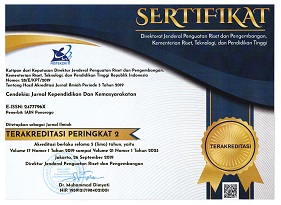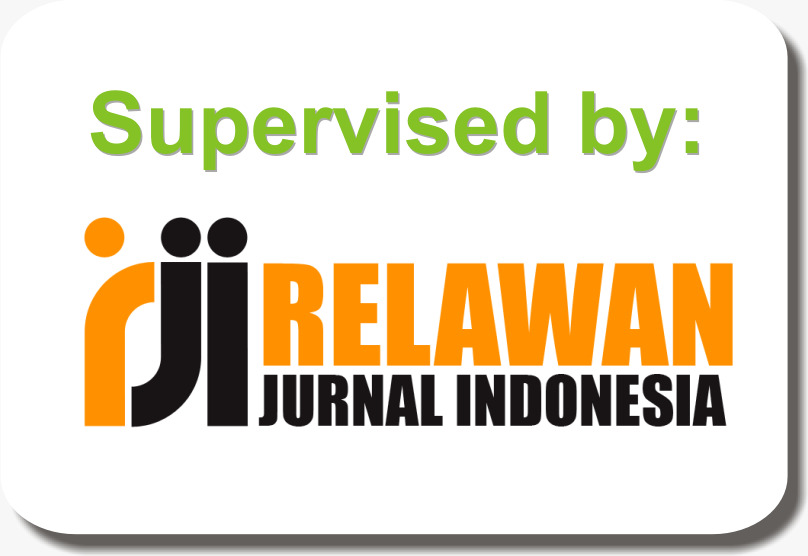Classification of Indonesian Students’ Ability to Read Al-Qur'an: The Role of Educational Institutions
DOI:
https://doi.org/10.21154/cendekia.v19i2.3027Keywords:
Ability to read al-Qur'an, the role of the educational institution, formal, non-formal, in-formalAbstract
This research aims to classify the students' ability to read al-Qur'an in educational institutions. They play an essential role in improving their ability. It applied a qualitative descriptive method. Furthermore, the respondents were 1391 from 37 junior and senior high schools in Indonesia. The data then were analyzed using the Miles Huberman model with data condensation. The results showed that the classification of the ability to read al-Qur'an was divided into six indicators is 1) introducing hijaiyah letters; 2) sifatul huruf; 3) makharijul huruf; 4) tajwid; 5) tartil, and 6) the adab of reading al-Qur'an. The role of institutions in improving the competence of reading al-Qur'an based on existing indicators has different levels. Formal institutions contributed15%, and non-formal institutions 16%. Informal institutions play more roles than other institutions. It was 26%. Thus, the development and strengthening of education based on a particular curriculum for learning the Qur'an is essential to align the standards of students' ability to read al-Qur'an. Hence, each educational institution can strengthen its role in managing the learning of al-Qur'an better.
Penelitian ini bertujuan untuk mengklasifikasikan kemampuan membaca al-Qur'an peserta didik melalui peran lembaga pendidikan. Lembaga pendidikan mempunyai peranan penting dalam meningkatkan kemampuan membaca Al-Qur’an. Penelitian ini menggunakan metode deskriptif kualitatif. Jumlah responden adalah 1.391 dari 37 SMP dan SMA di Indonesia. Data tersebut kemudian dianalisis menggunakan model Miles Huberman dengan kondensasi data. Hasil penelitian menunjukkan bahwa klasifikasi kemampuan membaca al-Qur'an terbagi menjadi enam indikator, yaitu 1) mengenalkan hijaiyah huruf; 2) sifatul huruf; 3) makharijul huruf; 4) tajwid; 5) tartil, dan 6) adab membaca al-Qur'an. Sedangkan peran lembaga dalam meningkatkan kompetensi membaca al-Qur'an berdasarkan indikator yang ada memiliki tingkatan yang berbeda-beda. Lembaga formal memiliki peran 15%, lembaga non-formal sebesar 16%, dan lembaga informal memberikan peran lebih dibandingkan lembaga lain yaitu sebesar 26%. Dengan demikian, pengembangan dan penguatan pendidikan berbasis kurikulum tertentu untuk pembelajaran Al-Qur'an sangat diperlukan untuk menyelaraskan standar kemampuan membaca Al-Qur'an peserta didik, sehingga setiap lembaga pendidikan dapat memperkuat perannya dalam mengelola pembelajaran al-Qur'an dengan lebih baik.
Downloads
Published
Issue
Section
License
Copyright & License
Please find the rights and licenses in Cendekia: Jurnal Kependidikan dan Kemasyarakatan. By submitting the article/manuscript, the author(s) agree with this policy. No specific document sign-off is required.
1. License
The non-commercial use of the article will be governed by the Creative Commons Attribution license as currently displayed on the Creative Commons Attribution-NonCommercial 4.0 International License.
2. Author(s)' Warranties
The author warrants that the article is original, written by the stated author(s), has not been published before, contains no unlawful statements, does not infringe the rights of others, is subject to copyright that is vested exclusively in the author and free of any third party rights, and that any necessary written permissions to quote from other sources have been obtained by the author(s).
3. User/Public Rights
The spirit of Cendekia: Jurnal Kependidikan dan Kemasyarakatan is to disseminate articles published as free as possible. Under the Creative Commons license, Cendekia: Jurnal Kependidikan dan Kemasyarakatan permits users to copy, distribute, display, and perform the work for non-commercial purposes. Users will also need to attribute authors and Cendekia: Jurnal Kependidikan dan Kemasyarakatan on distributing works in the journal and other media of publications. Unless otherwise stated, the authors are public entities as soon as their articles got published.
4. Rights of Authors
Authors retain all their rights to the published works, such as (but not limited to) the following rights;
- Copyright and other proprietary rights relating to the article, such as patent rights,
- The right to use the substance of the article in own future works, including lectures and books,
- The right to reproduce the article for own purposes,
- The right to self-archive the article,
- The right to enter into separate, additional contractual arrangements for the non-exclusive distribution of the article's published version (e.g., post it to an institutional repository or publish it in a book), with an acknowledgment of its initial publication in this journal (Cendekia: Jurnal Kependidikan dan Kemasyarakatan).
5. Co-Authorship
If the article was jointly prepared by more than one author, any author submitting the manuscript warrants that he/she has been authorized by all co-authors to be agreed on this copyright and license notice (agreement) on their behalf and agrees to inform his/her co-authors of the terms of this policy. Cendekia: Jurnal Kependidikan dan Kemasyarakatan will not be held liable for anything arising due to the author(s) internal dispute. Cendekia: Jurnal Kependidikan dan Kemasyarakatan will only communicate with the corresponding author.
6. Royalties
Being an open accessed journal and disseminating articles for free under the Creative Commons license term mentioned, the author(s) are aware that Cendekia: Jurnal Kependidikan dan Kemasyarakatan entitles the author(s) to no royalties or other fees.
7. Miscellaneous
Cendekia: Jurnal Kependidikan dan Kemasyarakatan will publish the article (or have it published) in the journal if the article's editorial process is completed. The editors of Cendekia: Jurnal Kependidikan dan Kemasyarakatan may modify the paper to a style of punctuation, spelling, capitalization, referencing, and usage that deems appropriate. The author acknowledges that the article may be published so that it will be publicly accessible, and such access will be free of charge for the readers, as mentioned in point 3.

















